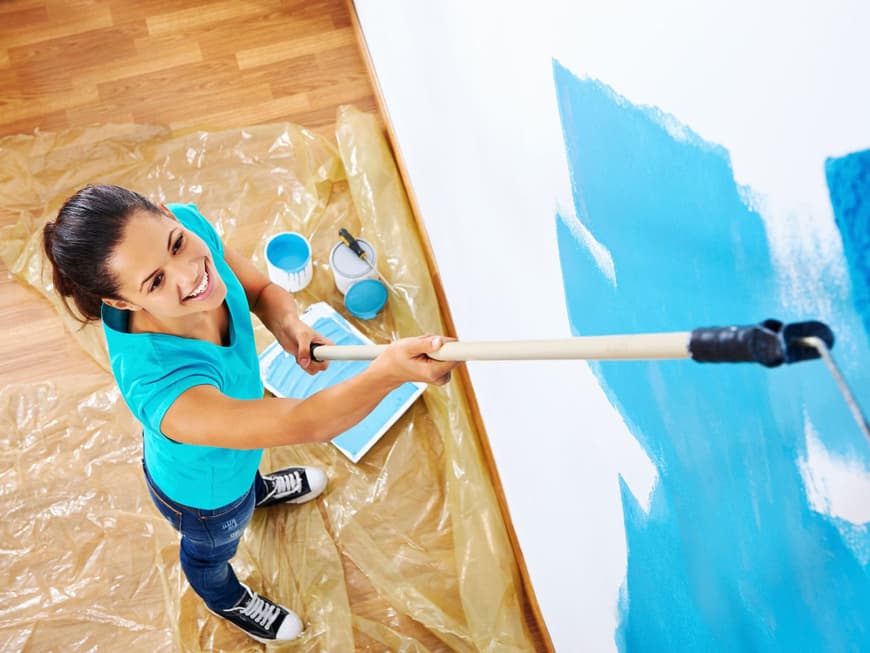
Restrained tones or bright colors, just one wall or the whole room - a fresh coat of paint also brings a new sense of well-being. I can't do that, you say? Not at all! Painting really isn't difficult. Here's how to paint your home perfectly.
Painting project: it works with these tips
Before painting
If you want your four walls to shine in new colorful splendor, you need to do a little preparatory work. For example, before you buy the paint, you should calculate the number of square meters you want to cover with a new coat of paint and possibly double it if one coat of paint might not be enough. This is the case, for example, if you are working with certain painting techniques or want to cover a strong white color. The yield of the paint you have chosen is indicated on the paint bucket (e.g. 200 ml/m2). Other important tips for painting: The surface must be dry, clean and free of grease before you start coloring it. Peeling paint should be removed, wallpaper residue removed and old distemper washed off. If there are any holes in the wall, you should fill them with plaster and smooth them out with a spatula.
For a successful painting result, you should mask off door and window frames thoroughly with masking tape. Even if it takes a lot of time, it's definitely worth the effort. Also cover radiators and floors. Otherwise you will have a lot of cleaning to do after painting.
The 1x1 of colors
Now you can (almost) start painting. To help you put your ideas into practice, we have compiled a list of the different types of wall paint, their individual advantages and the results they achieve:
Emulsion paint: this is water-based and is the most commonly used paint. As it is abrasion-resistant, odorless, breathable and highly opaque, one coat is usually enough. It can be easily tinted, mixed and painted over again.
Latex paint: Because it can be wiped off with a damp cloth, is very hard-wearing and water-repellent, it is mainly used in bathrooms, kitchens and stairwells. However, it cannot be painted over with emulsion paint, but only with new latex paint.
Textured paint: Also known as brush-on plaster. The emulsion paint contains fine grains of sand that provide a plastic surface. Suitable for absorbent substrates such as concrete or plaster.
Distemper: The natural raw materials glue and chalk are mixed with water. Ideal for allergy sufferers, but not abrasion or water resistant. It cannot be painted over and must be washed off.
Roller or brush? How to paint perfectly
There are many different painting techniques, but the basis is always the same. Brushes should have dense, flexible bristles that keep springing into shape. Use them to paint the edges around windows, doors and moldings. Stir the paint well. First paint the ceiling with a roller. An extension pole is helpful here. Because if you stand securely on the floor, you can work better. Then paint the corners and edges with a brush. While the paint is still wet, work on the adjacent wall surfaces with the roller.
To do this, spread the paint across each wall once, then paint evenly from top to bottom.
